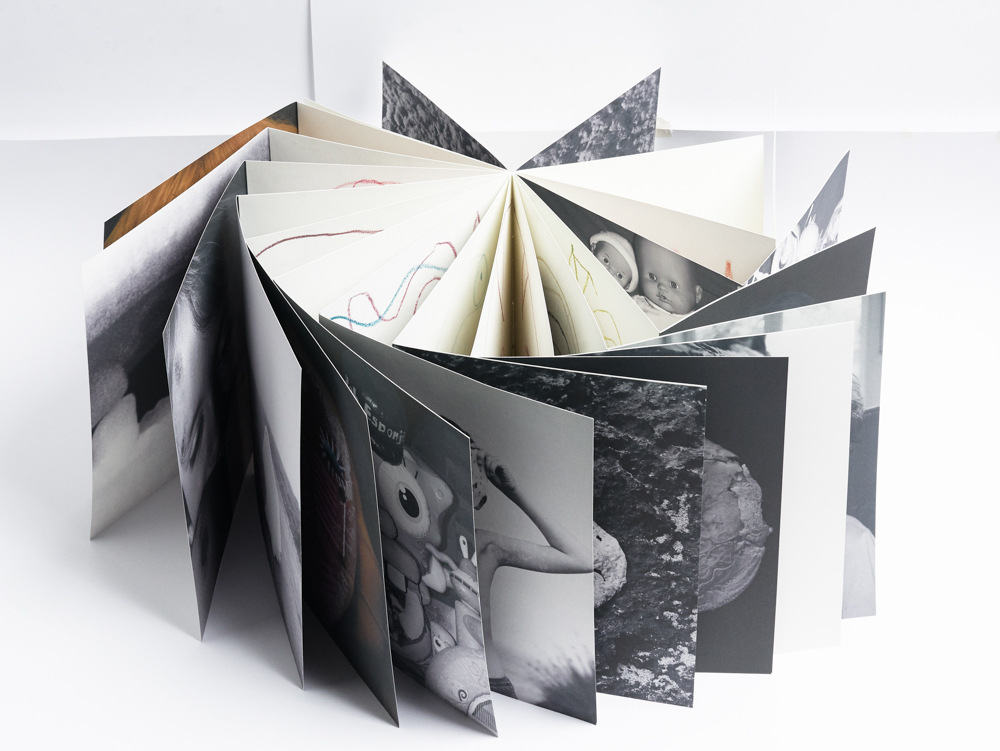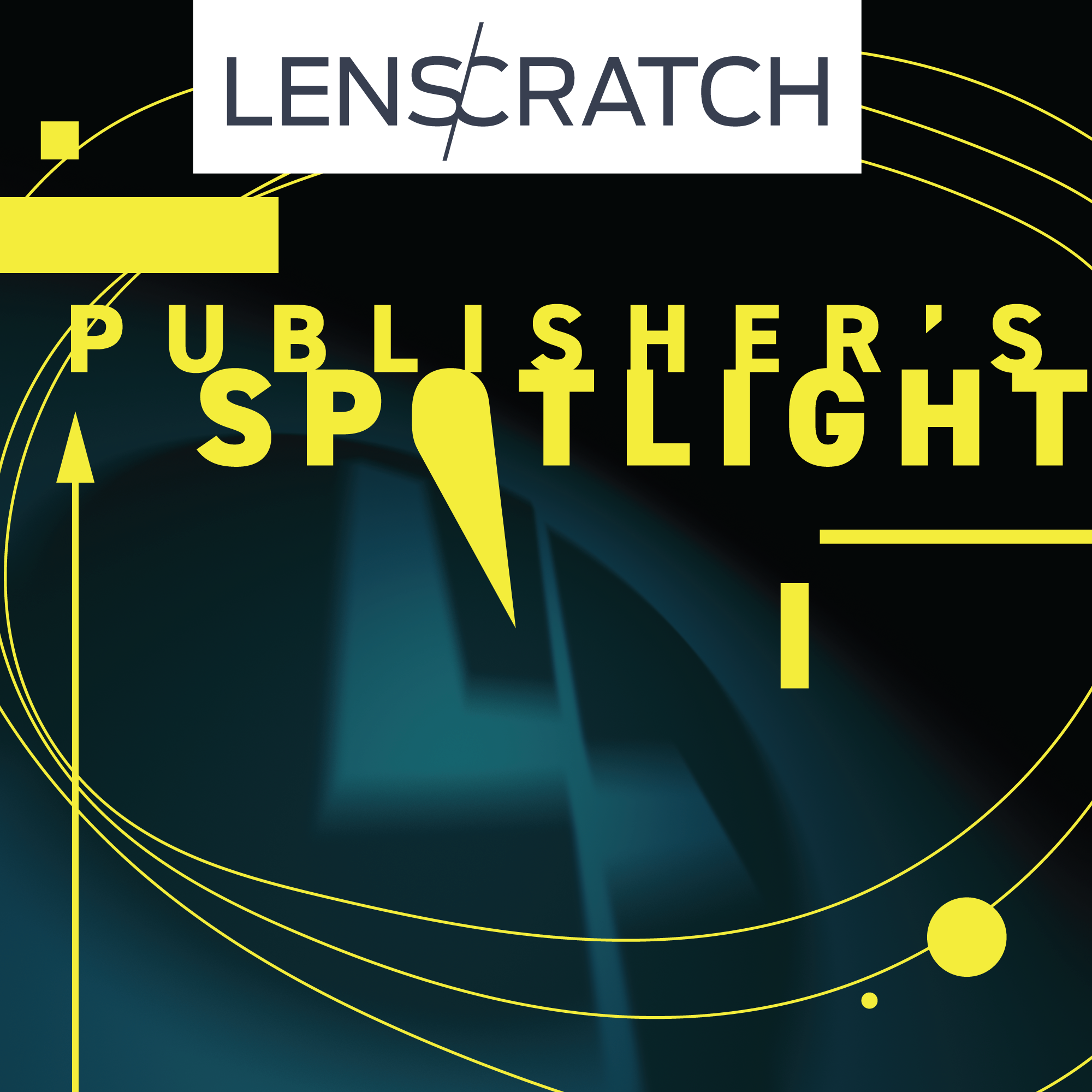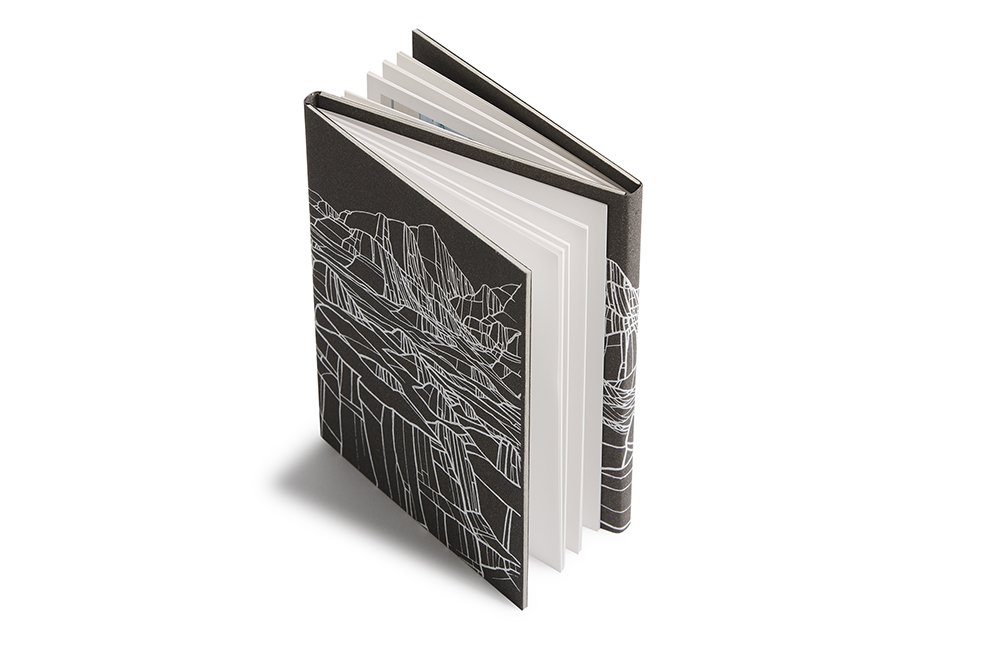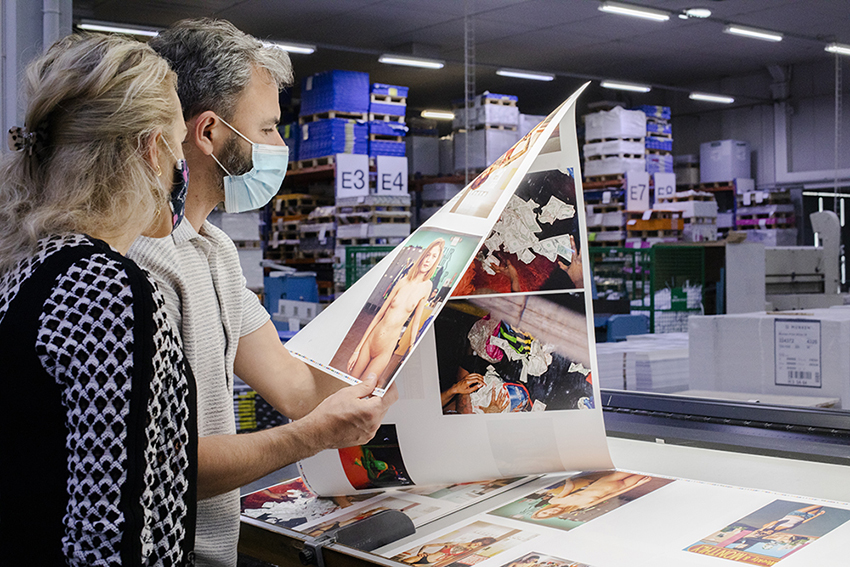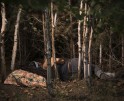Publisher’s Spotlight: XYZ Books
These past months we have been focusing on books on Lenscratch. In order to understand the contemporary photo book landscape, we are interviewing and celebrating significant photography book publishers, large and small, who are elevating photographs on the page through design and unique presentation. We are so grateful for the time and energies these publishers have extended to share their perspectives, missions, and most importantly, their books.
XYZ Books publishes books from a wide array of interests and scopes in photography from artists at different points in their careers.
Today, photographer and editor Carlos Barradas interviews XYZ Books founders, Pedro Guimarães and Tiago Casanova.
Follow XYZ Books on Instagram: @xyz_books
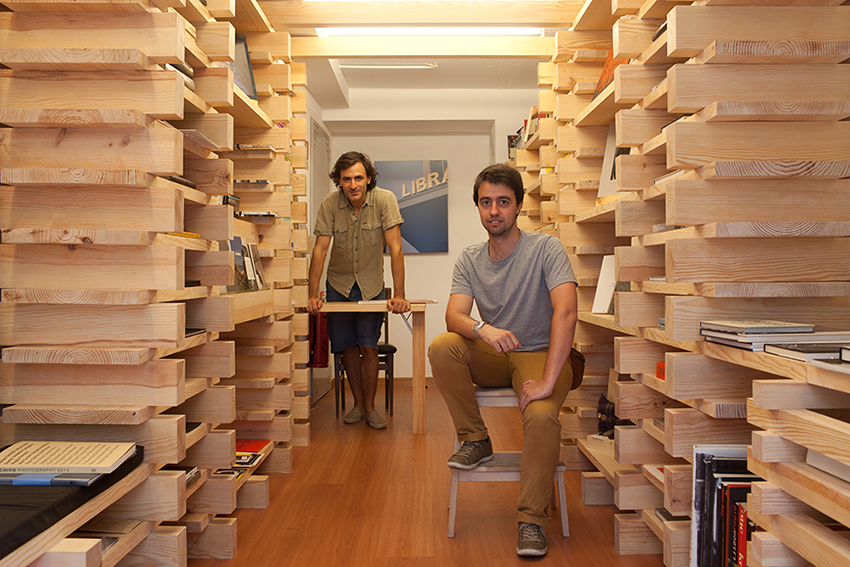
© XYZ Books. XYZ Bookshop and its founders: Pedro Guimarães (back) and Tiago Casanova (front). Photograph from 2013 at a previous location in downtown Lisbon.
What is your mission as a publisher?
XYZ Books was created as a launching platform to publish the work of its own founders, Pedro Guimarães, Tiago Casanova, and Valter Vinagre. Eventually, the project got a new life of its own and other artists have been published. Truth is, there has never been an ideological background behind XYZ Book except a genuine desire to publish great books. We have always been open to all kinds of artists, coming from all walks of life, emerging and established. We try to stick with people who use lenses to produce their work, but apart from that, we don’t have any restrictions. This is what is at the base of our core values: we don’t favor specific trends or types of photography or any of its relation to other visual arts. We do, however, have a mission: to always mix the right bunch of people, specially picked for every single project, in order to produce the best book one could produce with an already existing body of work. Each book is always the result of a combination of different editors, designers, technicians, and printers. So if we can say so, our mission is to always choose the best talent for each project and to make sure the final result is always unique and innovative.
What was the first book you published, and what did you learn from that experience?
The first book we published was “Pearl” by Tiago Casanova and this was our first serious encounter with the publishing industry. Even though the print run was 500 copies, offset printing, this book involved a lot of manual work. Each copy was manually bound, given the circular layout of the book.
We didn’t know much by then, so I guess with this book we have learned that our ignorance would only be transformed into knowledge if we decided to fully immerse ourselves in supervising every single step of the book’s conception and production. Learning by doing, it’s called. Despite all the challenges, we were extremely happy with the quality of the final product. In a way, our first book employed a clever binding solution that translated the relationship between Casanova’s photographs and those captured by his grandfather decades earlier. Without knowing we were mixing product design with some complex binding theories, and with this, we materialized the dialogue between two different generations. At this point it became very real for us that a book is not just a book, there are many dimensions at play, some of them that only exist outside the two-dimensional world of the graphic design software application.
How big is your organization?
We are a very small independent publisher. Our team is currently composed of 3 elements, 2 of which are the editors and 1 assistant editor.
What are the difficulties that publishers face?
Lack of time and lack of business skills would certainly come at the top of the list. Since we are essentially an artist-run platform, keeping oneself alive will always depend on a tough negotiation between the time dedicated to being an artist and time dedicated to the operational aspects of a publishing house. The list of tasks is very extensive and it largely exceeds roles that are purely artistic. And, just like any other business, there is a very heavy burden to carry: accounting, taxes, orders, payments, applications for grants, and so on. Other purely commercial publishers might have something else to say, but from our perspective, this is how it feels like.
Are there any publishing projects that have been particularly meaningful to you?
Each one of our projects has, until now, been produced with the same degree of dedication and dedication by all those attached to each project. We couldn’t possibly pick a favorite one.
What upcoming projects are you excited about?
In 2019 we launched the XYZ Books Residencies, an educational program on photobook-making. After some first trials and experiments, in 2021 we were able to have a specially funded project to host 4 Portuguese photographers from different generations to participate in this residency, with the participation as guest editors of Vanessa Winship, George Georgiou, Federico Clavarino, and Sharon Young. We are now about to publish the 4 new titles by Mariana Rocha, Nuno Andrade, Inês Gonçalves and Luísa Ferreira in early 2022. Not only are we extremely excited about the results and the amazing new books we put together, but also this is the confirmation that our Photobook Making Residency is effective.
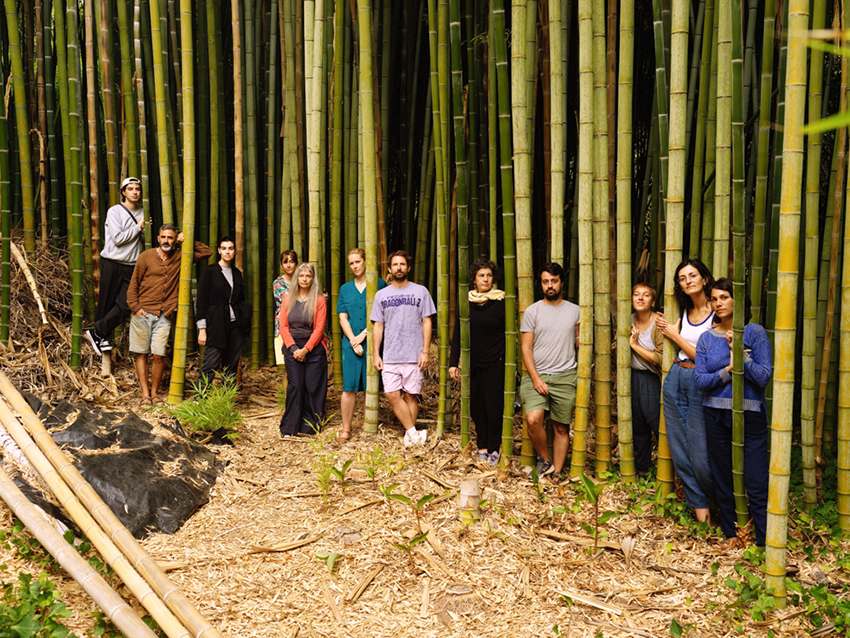
© XYZ Books. Group portrait during the XYZ Books Residency 2021 Edition. Left to right: Giacomo Alberico; Pedro Guimarães; Mariana Rocha; Tami Izkoi; Vanessa Winship; Sharon Young; Federico Clavarino; Luísa Ferreira; Tiago Casanova; Ana Rocha; Mariana Veloso and Joana Durães.
How many books do you publish a year, and how do you choose which projects to publish? Do you have a specific focus?
In 8 years we have published around 18 titles, from zines to hardcover books, and for 2022 we are planning to publish at least 7 new titles. We predict 2022 to be the year that marks the end of our erratic output, the inauguration of a new period of prosperity! [laughs]. With time our structure became a bit more established, a bit more professional, and our attitude towards the market also grew in maturity. For this reason, we decided that publishing 6 to 8 new titles each year would amount to the workload we can actually deal with at the moment.
As for focus, we don’t have a specific focus regarding thematics or genres, but we try to focus on projects that carry certain potential aspects that allow us to think in a sort of holistic way. Our main interest is not to look exclusively at what a specific artist might be doing, but to look at all the potential aspects that can be explored by integrating a good body of work within a specific workflow, where graphic design, printing, and binding are extremely important steps of the process. Most of our books are the result of a collaborative process rather than the mere display of someone’s body of work, and that’s why it is so easy for us to work with both established artists and emerging ones.
How can an artist get their work in front of you? Do you have any advice for photographers?
When it comes to choosing our artists, It’s kind of like picking fruit by hand, we just follow our intuition. Of course, sometimes we get lucky and the apple falls on our lap, like when that amazing artist shows up here in the studio, carrying in his hands an amazing dummy, but quite often our job is to keep in touch with those with whom we feel emotional empathy and admiration. Despite our own search, we do get, of course, a lot of submissions that we try our best to spend some time looking at. But sadly most of the proposals we receive arrive by email or social media, usually accompanied by a generic presentation text. Email and social media are extremely saturated ways of communication in which so much gets lost so easily. We totally prefer when photographers bother to actually print their work and bind it somehow in the shape of a presentation dummy. Getting to know people face to face also helps a lot to establish a connection.
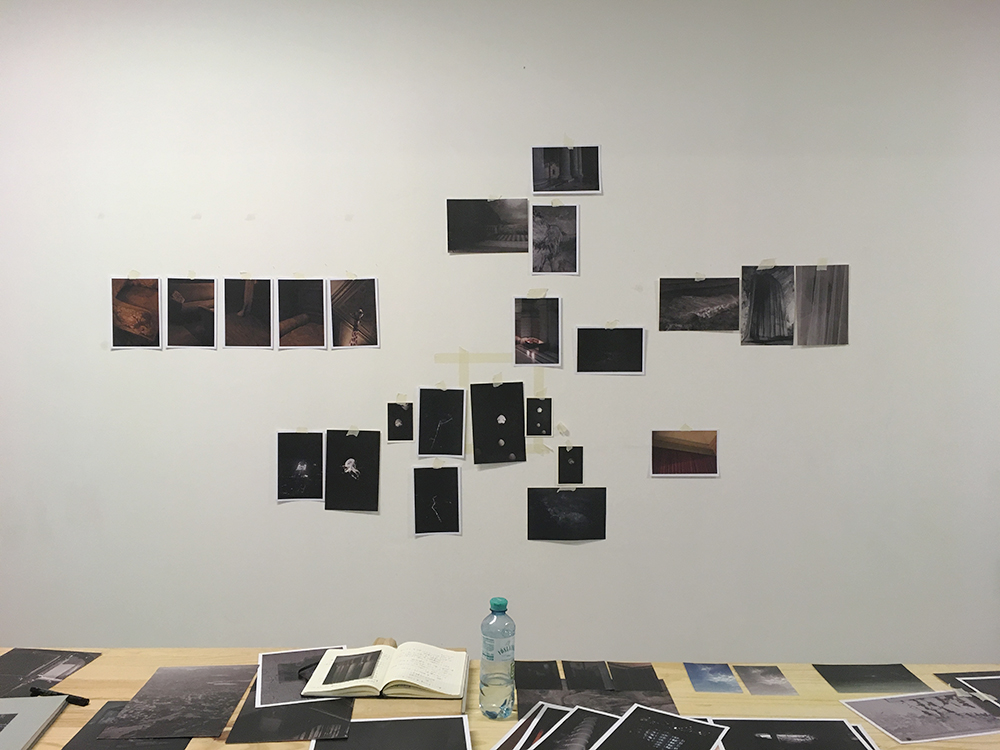
© XYZ Books. Editing the book “Ce qu’il Reste” by Bénédicte Blondeau during her Residency at XYZ Books, 2019.
What is the typical timeline of a project, from the beginning to the finished product?
We usually start working with an artist/photographer once the photographic project is done or shot, although a follow-up may happen while the artist is still working on the project. Sometimes the book concept goes side-by-side with the photographic action, usually with more experienced photographers, but most times the book is entirely conceived after the photography is done.
The first step is editing. Sometimes authors already bring an edited selection of images, or even a first dummy to show, but for us it is always very important to take a step back and revisit the entire body of work produced by the author for this specific project he is presenting. The editing process is a collaboration between the author and the editors, and even sometimes with the designer, depending on the nature of the project. Inside the editing process, which can take from 1 month to an entire year, the first step is just to look at the images several times during several different days and listen to the author’s ideas and concerns on the project. As editors, we need to let the images sink in our minds and we need to get used to them in order to have an honest and leveled discussion with the author about the project. The second step is to discuss and refine the concept of the work and the book. We try to focus on the question: “Why do we want/need to make this book”. In order to accomplish this step, sometimes we create a number of creative exercises with the author, such as experimental sequencing and writing ideas, words, and texts on the wall or a piece of large paper. The author’s usually want to say many different things at the same time, so one of the main challenges while editing a book is to simplify the concept.
This step usually helps to find a title for the work and to structure a concept, which then helps us to the following step which is sequencing the work. It may occur that at this point a designer is involved in the process because creative ways of presenting a work can change the way a sequence is presented in a book.
When the work is delivered to the designer some small stepbacks usually occur in the sequence, mainly for technical reasons regarding printing and binding. After the design is ready and approved by the author and the editors, we advance with the prepress and product pricing. Finally, we go to the printer.
How collaborative is the design process with the artist?
100% collaborative.
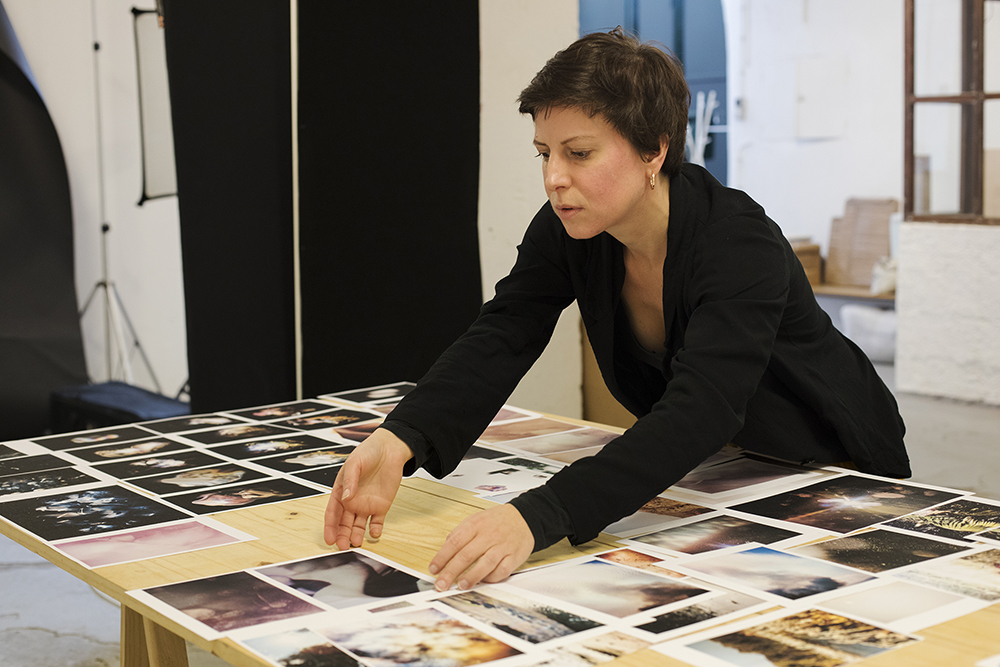
© XYZ Books. Editing the book “Palinopsia” by Michaela Putz during her Residency at XYZ Books, 2020.
How is the financial side of the project structured between publisher and artist? Does the artist contribute to production costs?
The great majority of the books we have published have been produced without the author’s contribution. Even though only a small fraction of our books are exclusively by us, given the non-commercial nature of our business model, we do resort to keeping close ties with several cultural institutions from different countries and work on behalf of the artist in order to secure essential funding for each project. We always knock first on the doors of institutions of the artist’s country of residency. And then we knock on our own Direcção Geral das Artes, Portugal’s art council.
Naturally securing the total amount of all investments is not a possibility at all times, and sometimes artists have no option to cover a part of the production costs that we always try to limit at 50% of the total amount invested. In these special cases, we make sure the artist gets the investment back in full by returning part of the revenue of sales.
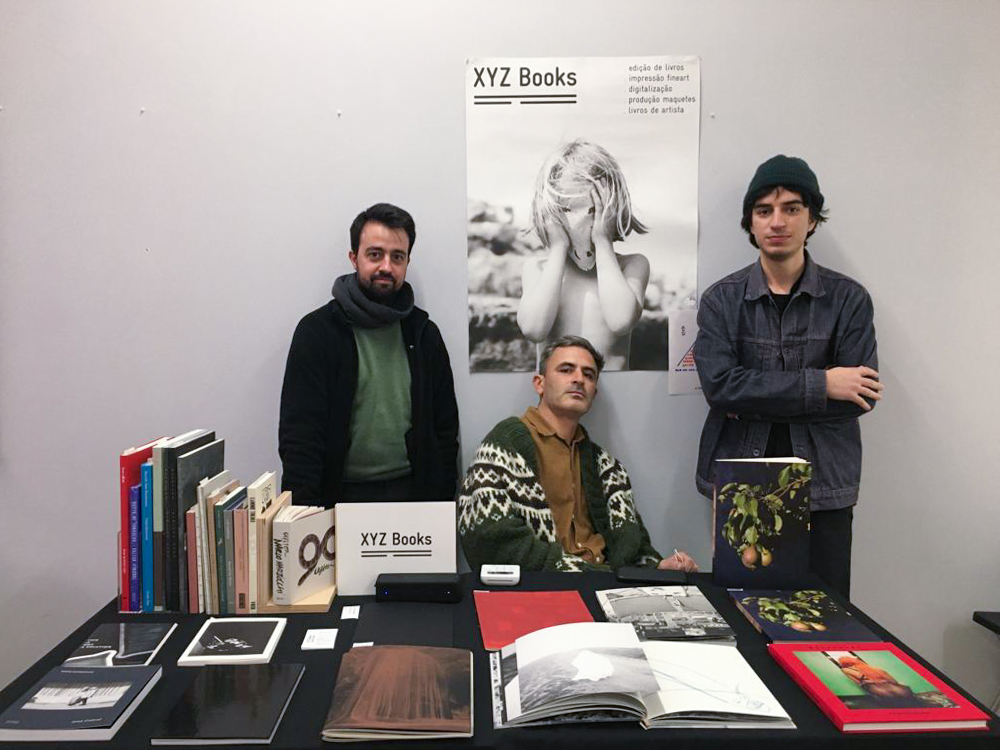
© XYZ Books. XYZ Books Team during Lisbon Photobook Fair, 2021. From left to right: Tiago Casanova, Pedro Guimarães and Giacomo Alberico.
What support do you give artists in terms of marketing or distribution? Do you attend book fairs?
Our distribution effort is basically rooted in three different channels, all with similar importance and weight: online sales, through our webpage and social channels, partnership with specialized bookshops, and book fairs. As for fairs, you will definitely find us in most of Europe’s well-known, also lesser-known, photobook and art fairs. We are also very active in sending press releases and copies of our books to our favorite magazines, curators, and critics.
Carlos Barradas is a photographer with a PhD in anthropology. He loves to make photographs and write about photography. He has exhibited his work in Europe and Latin America, and has published numerous articles and interviews on photography and visual anthropology. He is also co-founder and co-editor of SOPA Magazine.
Follow Carlos Barradas on Instagram: @barradascarlos
Posts on Lenscratch may not be reproduced without the permission of the Lenscratch staff and the photographer.
Recommended
-
Earth Week: Hugh Kretschmer: Plastic “Waves”April 24th, 2024
-
Earth Week: Richard Lloyd Lewis: Abiogenesis, My Home, Our HomeApril 23rd, 2024
-
Earth Month Photographers on Photographers: Jason Lindsey in Conversation with Areca RoeApril 21st, 2024
-
Earth Month Photographers on Photographers: J Wren Supak in Conversation with Ryan ParkerApril 20th, 2024
-
Earth Month Photographers on Photographers: Josh Hobson in Conversation with Kes EfstathiouApril 19th, 2024

